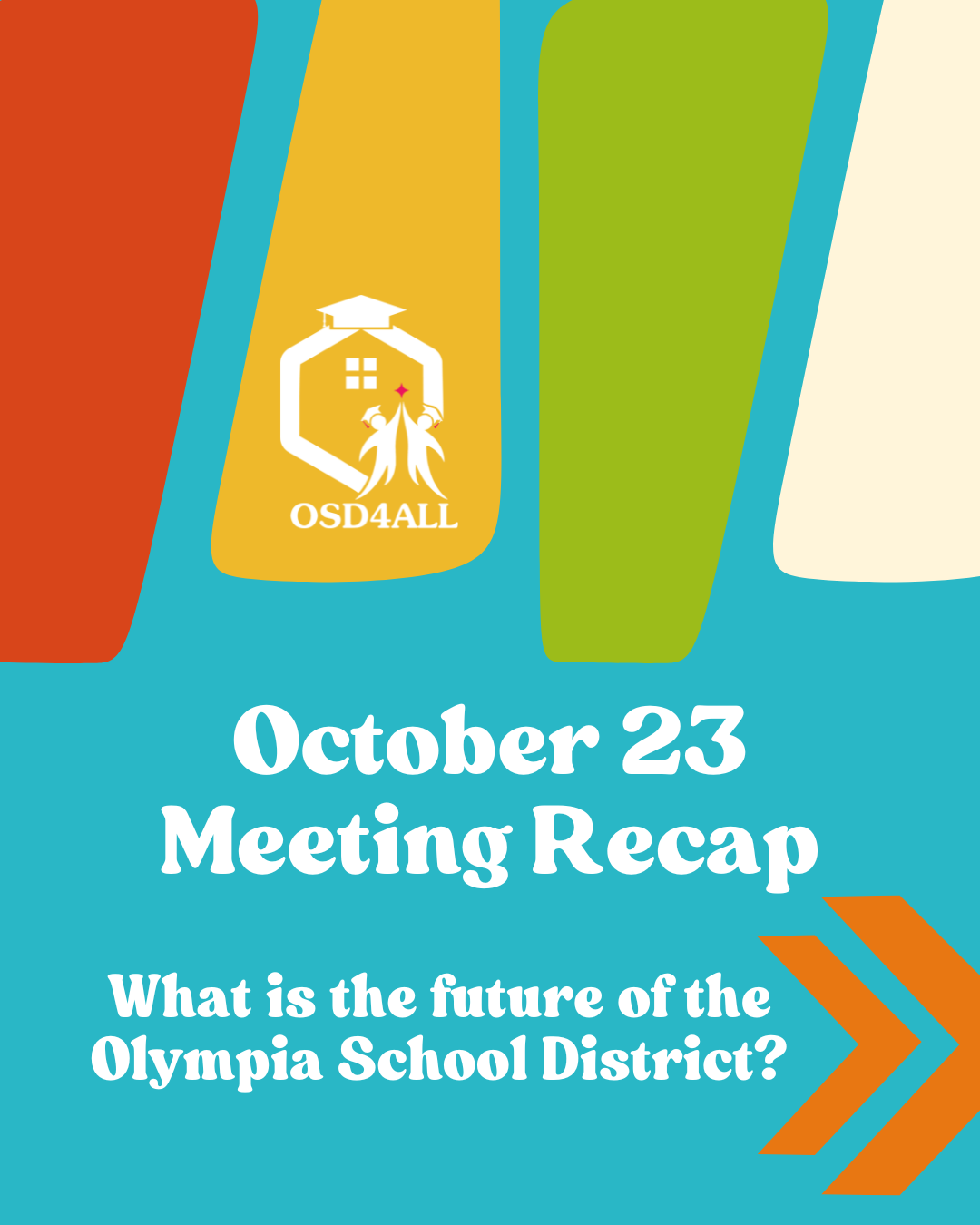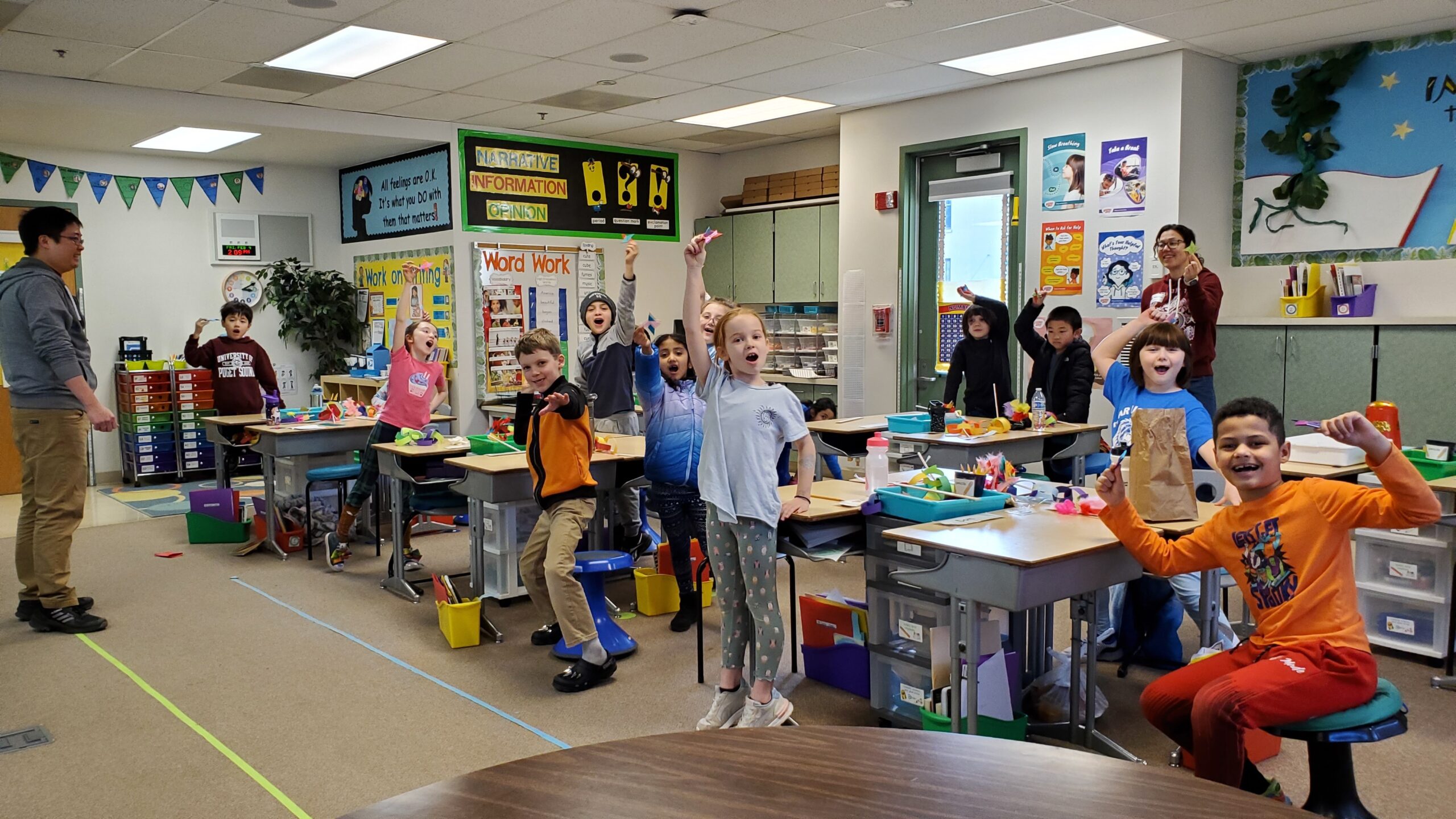Tech, Safety, and Facility Improvement Levy Report Adopted
The Olympia School District October 23 Board Meeting began with the second reading of the $72.9m Tech, Safety, & Facility Improvement Levy, which will go before voters in February 2026. Executive Director of Finance, Kate Davis, reiterated that the total of the levy would be $72.9 million, and that it would be replacing a previous levy to provide needed technology upgrades, facility upgrades, secondary teacher librarians, and professional development.
“Over 4 years, we really aimed to keep a steady tax rate of about 96 cents. In total, the district aims to have a tax rate of under $5 per $1,000 of assessed property value when we think about our bond levy.” The levy measure was adopted unanimously.
What Will Happen in 10 Years?
An 8-month Citizen Action Committee (CAC) informed the Long Range Facilities Master Plan for 2025-35. A long term enrollment analysis is required to make a Long Range Facilities Master Plan every 10 years. BERK Consulting’s Kevin Gifford went over the enrollment data. The research used the Washington Office of Financial Management (OFM) and Thurston Regional Planning Council (TRPC) population estimates, historic enrollment data, and US census data. The forecast model that BERK created is based on regression analysis looking at year’s past to make sense of the coarse data that OFM releases.

Gifford expanded, “We had approximately 1,429 new housing units come online in the district… However, most of the students who lived in units that were constructed during that period are living in single-family housing, and so this is how we can look at the rates at the bottom, and see that basically, your single-family homes are generally going to produce quite a few more students than multifamily units will.”
Director Maria Flores questioned some of the research, asking if it included foreclosures causing families to move and unhoused students. Director Flores continued, “The city has incentivized multifamily units to strengthen the downtown core to try to have more concentration in downtown, which is reflected in the permitting… How do you get the multiplier here of a multifamily apartment complex being less than a single-family home? I’m literally asking, where does the research come from that produces that multiplier?”
Gifford responded,“[BERK] didn’t spend a lot of time on the method for the generation rates… So, the multiplier here is not based on assumptions or research, it is literally [that] we just counted the number of students. And essentially, as you can see from the table, the number of students living there, that is a very small subset of the total enrollment in the district, and that is one of the limitations of the methodology overall, but this is why you do this every few years.” Student generation rates are typically used to set impact fees from development projects approved by the city that incentivize multifamily housing.
Director Flores also noted an outlier in Lincoln Options Elementary School having steady enrollment within one student over the 10 year projection, which contained volatility in enrollment across all other schools. Superintendent Patrick Murphy claimed it was a result of the catchment/lottery model, where the catchment generally produced 150 students. Though in the 2023-24 school year, only 74 catchment students were enrolled at Lincoln. Schools like Avanti, Lincoln, and ORLA did not have the level of volatility of neighborhood schools, based primarily on neighborhood enrollment, and Director Hilary Seidel mentioned that Jefferson Middle School also may have kept more of the middle school cohort enrollment over time due to the Jefferson Advanced Math and Science lottery/highly-capable program (JAMS).


What IS Modernization?
A CAC member noting that ‘modernization’ was mentioned multiple times in the master plan were told by Integrus Architecture representatives, “When you were to try to define what a modernization is, it can mean a lot of different things. So, you know, some recent examples are Roosevelt, McLane, and Centennial Elementary Schools that are very similar schools. They have all new floor finishes, and all new wall finishes, and the ceilings have been opened up to allow more daylight to come in, and so those are some full-scale modernization…. It could be a synthetic turf that’s going in instead of a grass field. So, there’s a lot of different definitions to modernization.”
What Happens Next?
Members of the Long Range Facilities CAC have long asked to see the presentation from Getting Smart, a consulting company that presented options informed by OSD’s small school model. Superintendent Murphy said it would be released to the public. The 2025-2035 Long Range Facilities Master Plan is likely to be adopted in a second reading at the November 13th board meeting.
As we move forward after a global pandemic, we implore you to vote by November 4th for the school board director you think can navigate the budget and our entire district’s needs in unprecedented times. Refer to our 2025 School Board Election page for more information on the candidates.


